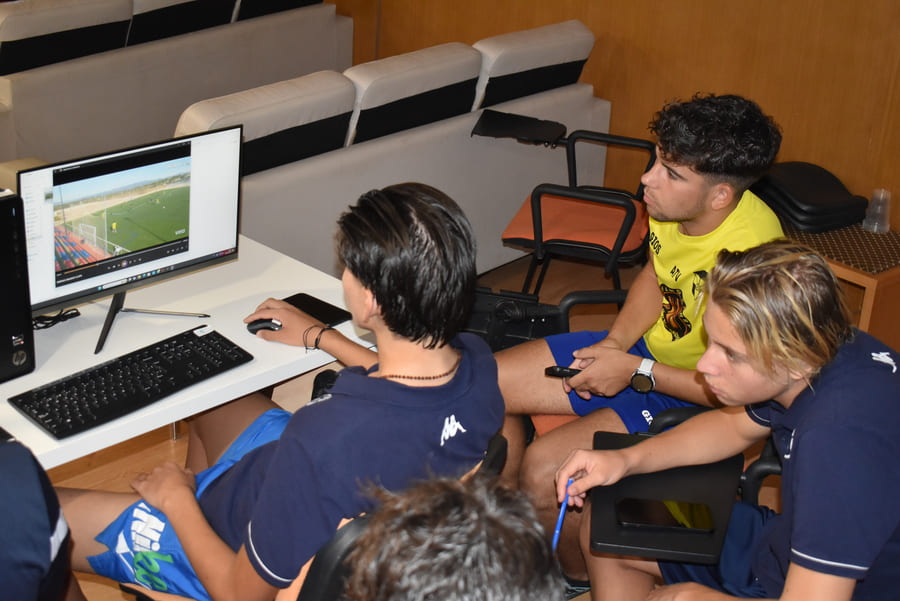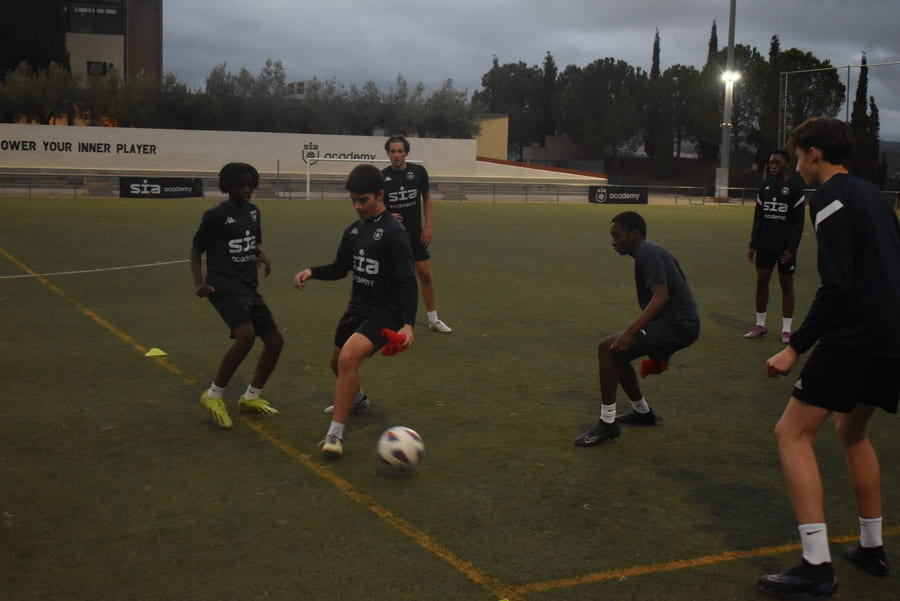Tactical preparation in football is a planned process that seeks to optimize both collective and individual performance of players through organization, strategy, and decision-making on the pitch. It is not only about placing eleven footballers in a formation, but about teaching them how to read the game, interpret different scenarios, and adapt to changes made by the opponent. In high-performance academies, this work becomes crucial, as it trains young players to compete at the highest professional level.
Table of contents
What tactical preparation means
Tactics in football is the ability to coordinate offensive and defensive actions according to a pre-established plan. This concept includes aspects such as collective movements, pressing after losing possession, managing spaces, and intelligent occupation of the field. Consequently, tactical preparation involves structured sessions in which coaches teach their players to recognize patterns and respond effectively under pressure.
Alain, coach and video analysis specialist at SIA Academy, explains: “Today’s footballer not only needs technique, but also needs to know what to do with it at every moment. Tactics is what differentiates a good player from a competitive footballer.”

How a team is prepared tactically
Tactical preparation requires a combination of theory and practice. In a well-designed process, players receive video analysis sessions, on-field training, and group talks aimed at understanding the game.
Among the most used methods are:
- Opponent analysis: studying systems, strengths, and weaknesses of rival teams through video analysis.
- Work in real match situations: training specific scenarios, such as defending with one man down or attacking in numerical superiority.
- Training by phases of the game: offensive, defensive, transitions, and set pieces.
- Individualized correction: each player receives specific feedback to improve performance within the collective scheme.
Alain points out: “In our sessions we use video analysis as a key tool. Players see their successes and mistakes in specific situations, and this greatly speeds up their tactical learning.”
The role of tactical preparation in youth development
One of the most important aspects is that tactics are taught progressively. Young players must first learn basic concepts of positioning and cooperation before assimilating complex systems. In this way, coaches build a solid foundation that later allows footballers to adapt to any style of play.
In high-performance academies, programs are designed so that each age group works at a tactical level suited to its stage of development. Thus, a 15-year-old player may learn notions of high pressing or retreating, while an 18-year-old already masters more elaborate positional attack systems.
The integration of video analysis into tactics
Nowadays, video analysis is essential for modern tactical preparation. It allows for detailed observation of both one’s own team and opponents, identifying game patterns and developing specific strategies. This visual resource improves concept retention and makes it easier for players to understand match situations clearly.
In academies like SIA Academy, video analysis is not a complement but a central part of the methodology. Players receive personalized clips showing them how to improve their decision-making in real time.
On-field training: from theory to practice
Tactical work is then transferred to the pitch. There, exercises are developed to reproduce the studied scenarios. For example:
- Coordinated pressing drills to recover the ball in the opponent’s half.
- Counterattack simulations to train decision-making at speed.
- Synchronized movements in set pieces, both offensive and defensive.
- Small-sided games to improve adaptation to limited spaces.
These training sessions, combined with physical and technical preparation, allow the player to develop a comprehensive understanding of the game.

The importance of communication
A key element within tactical preparation is communication. Body language, captain’s orders, goalkeeper’s indications, or gestures between teammates form part of a collective system in constant interaction. A team that communicates well is a team that plays united, and this is one of the principles worked on in elite academies.
Tactical preparation in modern football
In today’s football, marked by speed and intensity, tactics become a differentiating factor. It is not enough to have talented players; a collective structure is needed to maximize those talents. The big European teams are clear examples of how tactics can lead a group to surpass technically superior rivals.
That is why high-performance academy coaches teach their players to understand different tactical systems and adapt quickly during the match. Flexibility has become one of the most valued qualities in contemporary football.
Tactical preparation in football is much more than theory; it is an integral process involving analysis, practice, communication, and adaptation. Thanks to the combination of specific training and modern tools such as video analysis, players learn to understand the game from an advanced perspective.
As Alain sums up: “Our goal is for every footballer to think like a professional on the pitch. Tactics is not an addition; it is the heart of modern football.”
In this sense, academies specialized in talent development offer young players complete training, preparing future generations to perform at the highest competitive level.






